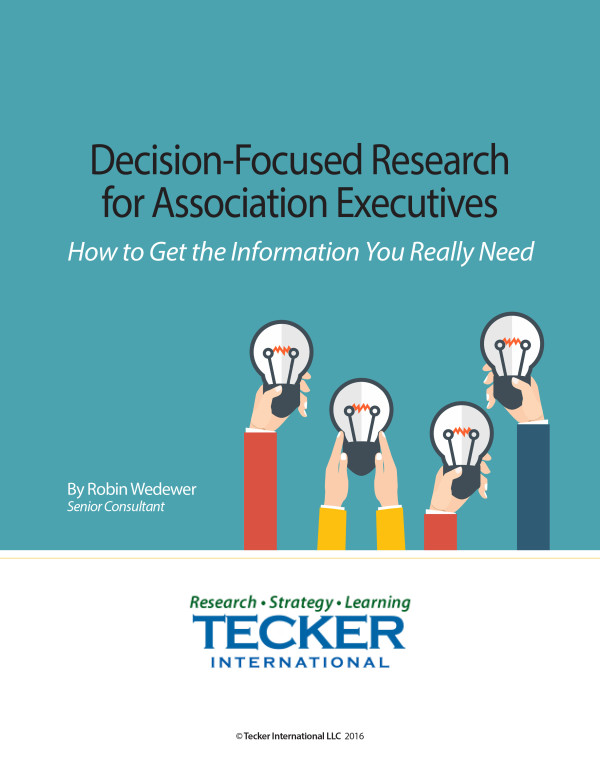DEI’s hidden age and class issues are just part of the pieces missing from meaningful organizational change. Tecker International founding partner Glenn Tecker explains.
In a recent NY Times article, David Brooks raised some crucial points on diversity to consider in ensuring that DEI initiatives result in something meaningful, not just another exercise in “window dressing” like so many other change initiatives.
Brooks articulated a concern long held by many. Without change that alters context and experience, sustainable change will probably not be achieved.
Strategists have long applied this insight in association remodeling work. It is a recognition that in organizations; structure, process, and culture intersect.
You cannot achieve sustainable change without addressing all three dimensions.
Four related principles guide the approach:
- Experience in context drives beliefs and values.
- Beliefs and values drive behavior.
- To change behavior, change beliefs, and values.
- To change beliefs and values, change experience, and context.
We have observed that familiarity does not breed contempt; it breeds comfort and understanding. Authentic comfort and understanding are not achieved in short bursts of artificial experience. The path is more likely to be found in focusing on the shared values that drive human behavior.
Demography does not predict beliefs and behavior. Values predict beliefs and behavior. Appealing to shared values is a path to inclusion.
Focusing on demographics may recognize diversity, but it will not necessarily lead to inclusion or equity. To assess progress toward those desired outcomes measure behavior; not physical characteristics.
Researcher David Allison has observed:
“As the world becomes increasingly complex, understanding how values impact our attitudes and behaviors can help us deepen our understanding across several avenues of life. Consumer research, marketing, leadership, psychology, and many other disciplines all fall within the broad spectrum of the influence of what humans value.”
This leads us to two considerations for today’s association leaders considering DEI initiatives in their organizations.
Issue 1: Only looking at demographics leads to unconscious bias
The use of demographics to predict the beliefs and behaviors of populations has made unconscious bias acceptable in too many nonprofit organizations.
The assumptions that all Blacks, all women, all gay men, or all older folks will think, prefer, and behave the same is a subtle form of bigotry. This bias impacts decisions about communications, marketing, and program strategy.
For example, the assumption that the representative of a demographic group that you have included on the Board or workgroup will reflect the perspectives of all members of that group is a false assumption. It is too often a classic example of “tokenism.”
Experience drives beliefs and values.
Beliefs and values applied within context drive behavior.
While experiences may be more common in certain demographic groups, not everyone in a particular demographic group has had the same experiences in identical contexts. Contrary to the declarations of several “experts” on generational marketing: not all Baby Boomers are bad team members and not all of Gen Z prefers on-line learning.
Research by Valuegraphics (an “n” of 500,000 respondents around the globe) has demonstrated that less than 15% of the values in any demographic are common.
Values are what drive people’s behavior, not physical attributes. To paraphrase Valuegraphics leader David Allison: “people run toward what is important to them.”
Try this on for size (taken with permission from *The Valuegraphics Database):
The members of any demographic cohort, whether defined by age, income, marital status, education, or etc., on average only agree with each 10.5% of the time.
All humans agree with each other roughly 8% of the time.
The delta is 2.5% more agreement within a cohort than with humans of any description.*
We believe it is time for nonprofit leaders to commit to a post-demographic view of the world that is neither blind to meaningful differences nor based on erroneous generalizations.
Issue 2: Old challenges in inclusion may have new answers using technology
Innovative technologies now make it possible to include purposefully composed and/or large populations in facilitated ongoing dialogue about issues of importance to them.
These answers are not just a private member site, online conference platform, online seminar software converted for discussion, or a traditional member survey. Inclusion and equal voice are baked into some new decision-making tools.
Facilitation Tactics and Technology Evolving Together
Virtual and face-to-face board and committee meetings can focus on decision-making rather than collecting opinions from an extroverted few because they are supported by information gathered and synthesized prior to convening. In the most effective tools, AI is integrated to facilitate the assessment of agreement, disagreement, and choices yet to be made.
Here is the truth:
- Smaller boards may be more efficient, but they also limit inclusion.
- Houses of Delegates are larger, but they are unwieldy and tend to be characterized by unequal participation and predetermined positions.
- Larger boards may be more representative, but they tend to delegate real authority to a small executive committee or senior staff.
A multiplicity of committees makes coherency in strategy a challenge.
New Possibilities for Change
The opportunity to re-imagine decision and work systems in a way that increases engagement, enhances dialogue, and advances diversity, equity and inclusion now exists.
When the pressures of current realities are relieved will associations address structure, process, and culture in a coherent rather than piecemeal fashion?
Will leadership invest the time, money, and relationship capital required to take advantage of the remarkable opportunities now available?
We believe the issue is not knowing how to do it. We know how. The issue is whether we have the will to evolve.
Tecker International, Association Chat, and Howspace are coming together to explore how leaders today can solve big problems and make important decisions with their teams in virtual environments. Join us to take part! https://bit.ly/better-together-chat
*The Valuegraphics Database is an accurate record of what everyone in the world truly cares about most. It is a random stratified statistically representative sample of the population of 180 countries, created from a half-million surveys collected in 152 languages, measuring 420 values, wants, needs and expectations with a +/- 3.5% margin of error and a 95% level of confidence.


